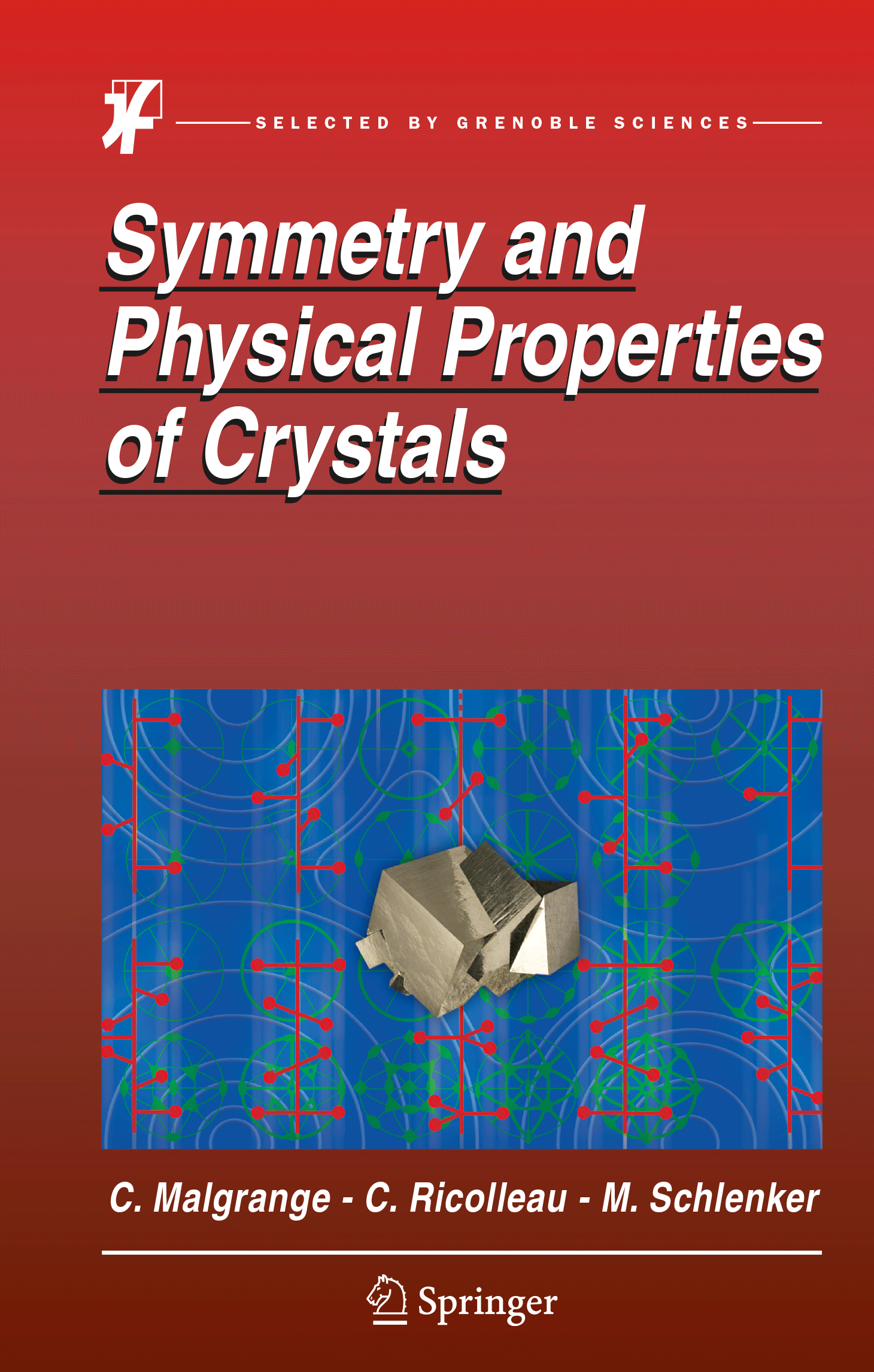Symmetry and Physical Properties of Crystals
Description

Paper version
- Availability:
- In bookstores
- EAN 13:
- 9789401789929 Buy online
Digital version
- EAN 13:
- 9789401789936 Buy online
Discover
- Extracts (PDF, 477 kB)
- Table of contents (PDF, 116 kB)
- Errata (1 page) (PDF, 91 kB)
Presentation
Crystals are everywhere, from natural crystals (minerals) through the semiconductors and magnetic materials in electronic devices and computers or piezoelectric resonators at the heart of our quartz watches to electro-optical devices. Understanding them in depth is essential both for pure research and for their applications.
This book provides a clear, thorough presentation of their symmetry, both at the microscopic space-group level and the macroscopic point-group level. The implications of the symmetry of crystals for their physical properties are then presented, together with their mathematical description in terms of tensors. The conditions on the symmetry of a crystal for a given property to exist then become clear, as does the symmetry of the property. The geometrical representation of tensor quantities or properties is presented, and its use in determining important relationships emphasized.
An original feature of this book is that most chapters include exercises with complete solutions. This allows readers to test and improve their understanding of the material.
The intended readership includes undergraduate and graduate students in materials science and materials-related aspects of electrical and optical engineering; researchers involved in the investigation of the physical properties of crystals and the design of applications based on crystal properties such as piezoelectricity, electro-optics, optical activity and all those involved in the characterization of the structural properties of materials.
Author(s)
Christian Ricolleau is the leader of the Advanced Transmission Electron Microscopy and Nanostructures (Me¯ANS) group at the Materials and Quantum Phenomena Laboratory (Paris Diderot University and CNRS). He has much experience in electron microscopy and in the growth of metallic nanoparticles on oxide substrates. Since 2008, he has been the director of the Nanoalloys Research Network of the CNRS.
Michel Schlenker is Emeritus Professor at Grenoble-Alpes University – Grenoble Institute of Technology. He taught, mostly basic physics, materials, crystallography and diffraction methods both at Grenoble universities and on international courses. His research work centered on non-conventional, diffraction-based imaging approaches. He was editor of the Journal of Applied Crystallography from 1984 to 1990.
Features
- Selected by Grenoble Sciences
- Publisher(s): Springer
- Date of publication: March 2014
- Number of pages: 550 pages
- Type of illustrations: 247 ill. (b/w)
- Language(s): English
- Original publisher: Springer
Selected by Grenoble Sciences, Latest titles
- Solid-State Electrochemistry Essential Course Notes and Solved Exercises
- Electron Paramagnetic Resonance Spectroscopy Applications
- Electron Paramagnetic Resonance Spectroscopy Fundamentals
- Air and Water Trade Winds, Hurricanes, Gulf Streams, Tsunamis...
- Complex Dynamics and Morphogenesis An introduction to nonlinear science
- Superconductivity An Introduction
- Atomic Properties in Hot Plasmas From Levels to Superconfigurations
- An Introduction to Differential Manifolds
- Symmetry and Physical Properties of Crystals
- Thinking in Physics The pleasure of reasoning and understanding
Updated on January 22, 2021

